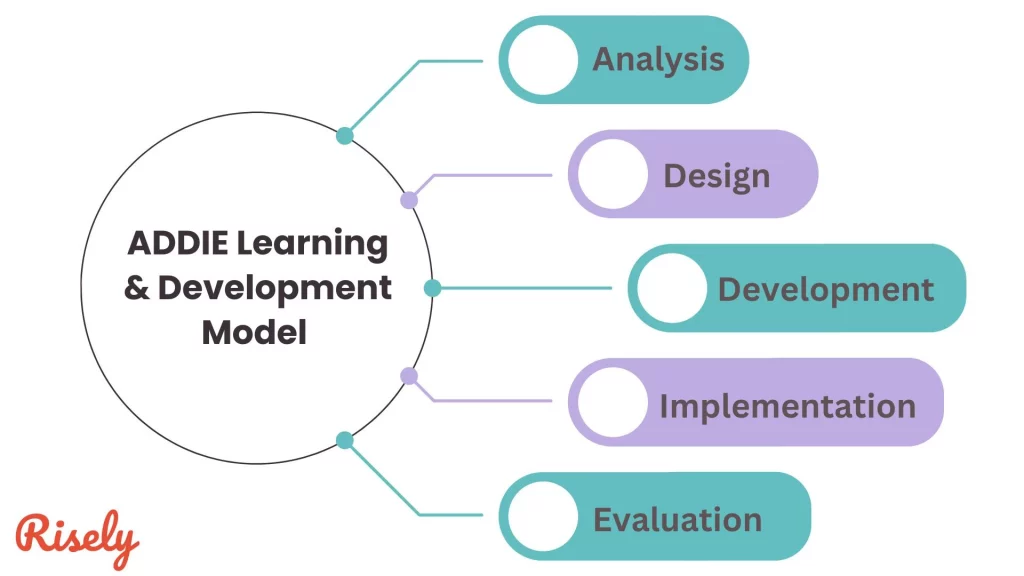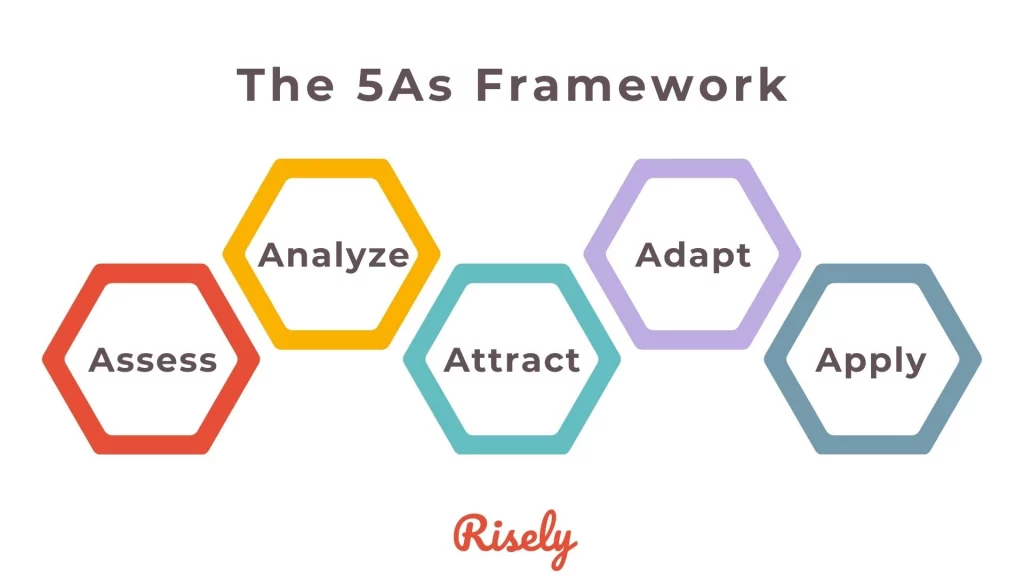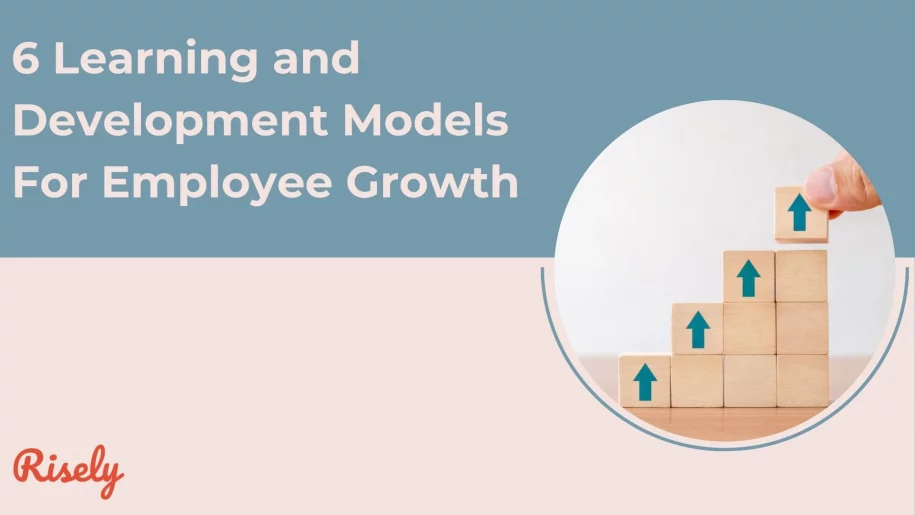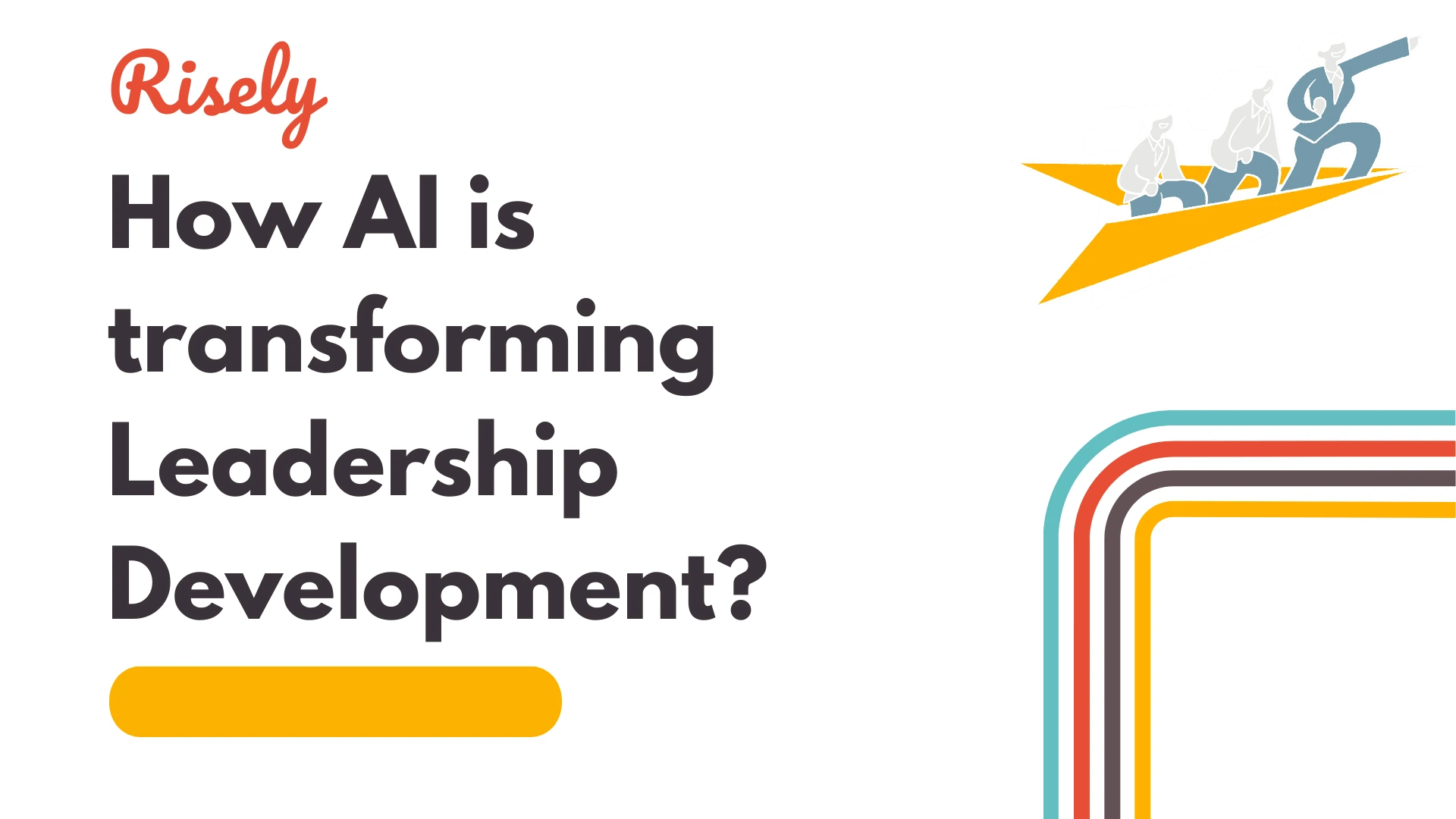6 Learning and Development Models For Employee Growth
As the HR or L&D leader, you know that learning and development models are not only frameworks anymore but the key to unlocking employee potential and tying it to business objectives. With all the learning and development methodologies, from social learning to experiential practice, you now have your network of learning and development techniques that can help diverse learning in your team. With mobile learning and virtual reality evolving as part of digital, training is now not a chore but an engaging way to upskill. Mastering these learning and development models gives you the capacity to build a continuous learning culture, so your employees are constantly developing, ahead of the curve, and prepared and able to keep up with the rapidly changing work world today.Exploring Key Learning and Development Models for Employee Growth
There is no one-size-fits-all approach to learning and development. Several approaches have been developed over time, each intended to meet unique business requirements, employee preferences, and learning environments. Selecting a model that aligns with organizational ideals and employee aspirations is crucial because the right model depends heavily on a company’s unique goals, culture, and team dynamics. Let’s explore a few important models:1. The 70:20:10 Framework for Learning and Development
The 70:20:10 framework was created by Morgan McCall, Michael M. Lombardo, and Robert A. Eichinger. This framework shifts how we think about learning and development, focusing on what really helps employees grow. It breaks down learning into 70% hands-on experience, 20% learning from others, and 10% formal training. Most of the learning happens on the job—through real tasks, problem-solving, and facing challenges head-on (the 70%). Then, there’s learning that happens socially—through conversations, feedback, and collaboration with colleagues (the 20%). And finally, formal training, like workshops and courses, fills in the gaps (the 10%).
2. ADDIE Learning and Development Model – Analysis, Design, Development, Implementation, Evaluation
The ADDIE learning and development model makes planning training programs feel straightforward and manageable, taking you through five steps: Analysis, Design, Development, Implementation, and Evaluation. The concept was created in 1975 by the Center for Educational Technology at Florida State University for the U.S. Army. Shortly after its inception, the ADDIE training model was adapted by the U.S. Armed Forces. It’s a great way to ensure your training hits the mark.
- Analysis: This is where you identify what learners need to know and what gaps exist. It’s about digging deep into your team’s current skills and the challenges they face.
- Design: Based on that analysis, you map out the structure of the program—what content to include, how it will be delivered, and what activities will engage your learners.
- Development: Here, all the training materials, modules, and resources are created. This is where your content comes to life, shaped by your earlier design.
- Implementation: This is the exciting part where the actual training takes place—whether through in-person workshops, e-learning, or other formats. It’s where your employees get hands-on with the training.
- Evaluation: Finally, after the training is delivered, you measure how effective it was. Did it achieve the learning objectives? Were the learners engaged? What can be improved for next time?
3. The 5As Framework: Assess, Analyze, Attract, Adapt, Apply
The 5As framework helps you design development programs that really stick, guiding you through five key steps: Assess, Analyze, Attract, Adapt, and Apply. It’s about making sure you’re not just checking boxes but delivering training that genuinely makes an impact.
- Assess: This is where you take stock of the current situation. What skills are lacking? What challenges are your team members facing? It’s about identifying gaps so you can target the right areas for development.
- Analyze: After the assessment, you dive deeper into the data. What do the results tell you? This step helps you understand the root causes and where your efforts should be focused to create meaningful learning outcomes.
- Attract: Engaging employees in their learning journey is crucial, so you need to ensure the program resonates with them—whether through real-life examples, interactive content, or clear connections to their daily roles.
- Adapt: Every organization is unique, and so are its learning needs. In this step, you adjust your plan to fit changing needs or specific challenges. Flexibility is key here—whether you need to tweak the content, delivery methods, or pacing to make sure it aligns with your learners’ circumstances.
- Apply: Finally, it’s time to put everything into action. You roll out the program, ensuring that the learning translates into real-world applications. At this stage, it’s not just about delivering the training, but ensuring that employees can apply what they’ve learned in their roles effectively.
4. Bloom’s Taxonomy Applied to Corporate Training
Bloom’s Taxonomy, by Benjamin Bloom, is like a roadmap for creating meaningful corporate training experiences. It guides you through six levels of learning—Remembering, Understanding, Applying, Analyzing, Evaluating, and Creating—to help your team not only learn new skills but use them effectively in their roles.
- Remembering: This is about recalling basic facts and concepts. In corporate training, it could mean teaching employees the fundamental principles of a new software tool.
- Understanding: At this level, learners comprehend what they’ve learned. For instance, once your team knows the basics of the software, they should be able to explain how its features work in their daily tasks.
- Applying: Here, employees use their knowledge in real-world scenarios. They begin to use the new software tool to solve day-to-day challenges at work.
- Analyzing: This step encourages employees to break down information and identify relationships or patterns. For example, they might analyze how using the tool improves efficiency across different departments.
- Evaluating: At this stage, learners can assess and make judgments. Your team could evaluate the effectiveness of the new software by comparing it with previous systems and determining if it meets their needs.
- Creating: The highest level, where employees combine their knowledge and skills to create something new—like developing workflows or systems that maximize the software’s potential in your business.
5. Kirkpatrick’s Four-Level Training Evaluation Model
Kirkpatrick’s Four-Level Training Evaluation Model is a simple yet powerful learning and development method to help you see the real impact of your training programs. It’s broken down into four levels: Reaction, Learning, Behavior, and Results—and each one helps you understand how effective your training really is.
- Reaction: This is all about how participants feel about the training. Were they engaged? Did they find it useful? For instance, after a leadership development workshop, you might gather feedback from managers on what they thought of the content and delivery.
- Learning: Next, it’s essential to measure what participants have learned. Are they walking away with new knowledge or skills? For example, you could give employees a quick assessment after the session to see if they’ve grasped key concepts like conflict resolution or team management.
- Behavior: This stage looks at whether employees are actually applying what they’ve learned back in the workplace. Are managers using the new leadership techniques? Have they made changes in how they communicate with their teams? Behavior change is a critical sign of training effectiveness.
- Results: Finally, you evaluate the impact on business outcomes. Did the training lead to measurable improvements in productivity, employee engagement, or revenue growth? For example, if the leadership training helped reduce employee turnover, that’s a clear sign of success.
6. Gagne’s Nine Events of Instruction for Effective Learning Programs
Robert Mills Gagné‘s Nine Events of Instruction are like a roadmap for creating engaging and effective training programs. Each step helps you guide your team from learning new information to applying it confidently in their jobs.
- Gain Attention: Get your team’s attention right from the start. Whether it’s with an interesting fact or a surprising question, make them curious about what’s coming next.
- Inform Learners of Objectives: Make it clear what they’ll learn and why it matters to them. Maybe you’re helping your managers improve their communication skills—let them know they’ll leave the session with practical tools to handle difficult conversations more effectively.
- Stimulate Recall of Prior Learning: Connect today’s training to what they already know. Ask them to share how they’ve managed tough conversations before or recap lessons from previous sessions.
- Present the Content: Now, it’s time to teach. Keep it engaging by mixing up how you present the material—use videos, examples, or even stories to make the learning stick.
- Provide Learning Guidance: Offer helpful tips and tricks along the way. Show them how to approach a tough conversation with a simple, step-by-step guide they can use in real life.
- Elicit Performance: Let them practice what they’ve learned. Role-plays are great for this—your team can try out their new communication skills in a safe space, getting feedback without the pressure of real-world consequences.
- Provide Feedback: Give them constructive feedback. Point out what they did well and what they could improve. This helps build confidence and clarity.
- Assess Performance: See how well they’ve learned the material. You could do this with a quick quiz or by asking them to handle a real conversation and report back on the results.
- Enhance Retention and Transfer: Make sure the learning sticks by offering follow-up resources or setting up short refresher sessions. Encourage them to keep practicing, so these new skills become second nature.
A Table Comparing All the Learning and Development Models
| Learning and Development Model | Key Elements | Application | Strengths |
|---|---|---|---|
| 70:20:10 Framework | 70% experiential, 20% social, 10% formal learning | Continuous learning through work, collaboration, and formal training | Emphasizes on-the-job learning, real-world application, and peer interaction |
| ADDIE Model | Analysis, Design, Development, Implementation, Evaluation | Systematic approach to training design and implementation | Structured process ensuring thorough planning, content creation, and assessment |
| 5As Framework | Assess, Analyze, Attract, Adapt, Apply | Customizable for developing learning programs that fit evolving needs | Focuses on continuous improvement, flexible adaptation of learning solutions |
| Bloom’s Taxonomy | Remember, Understand, Apply, Analyze, Evaluate, Create | Structured learning approach progressing from basic to complex skills | Encourages critical thinking and problem-solving, supporting all learning levels |
| Kirkpatrick’s Four-Level Model | Reaction, Learning, Behavior, Results | Evaluating the effectiveness of training programs | Provides data-driven insights into training impact and effectiveness |
| Gagne’s Nine Events of Instruction | Attention, Objectives, Prior Knowledge, Content, Guidance, Performance, Feedback, Assessment, Retention | Sequential approach to delivering learning experiences | Ensures engagement, skill practice, and feedback to reinforce learning |
How Can You Choose the Right Learning and Development Model?
Choosing the right learning and development model can be a game-changer for both your organization and your team. As an L&D head, you start by connecting with your team to understand their unique needs and aspirations and build your L&D strategy. Take the time to assess the specific skills gaps within your group, and don’t hesitate to have open conversations about their learning preferences—some might thrive on hands-on experiences, while others may prefer a more structured approach. Grab your free copy of Risely’s skills gap analysis framework now! Consider incorporating modern tools that resonate with your team, such as AI-driven personalized learning paths, microlearning modules for quick skill refreshers, or even virtual reality for immersive training experiences. These tools can make learning not just effective but also engaging. Remember to align your chosen learning and development model with your organization’s broader goals, ensuring that learning becomes a natural part of the daily workflow rather than an isolated activity. Most importantly, foster an environment of continuous feedback and improvement. By being adaptable and responsive to your team’s evolving needs, you create a high-performing culture where everyone feels supported in their professional growth, driving both individual and organizational success.Conclusion
In conclusion, trying different learning and development models is very important. This helps organizations grow and innovate. By using both old and new learning and development methodologies, companies can meet various learning styles and the specific needs of their employees. Improving learning and development strategies with new tools and technology helps with skill growth. It also keeps employees engaged and helps them stay. Going forward, focusing on personal learning paths and getting ongoing feedback will be key for making L&D efforts more effective.Ready to elevate your team’s learning and development journey?
Grab a free copy of Risely’s Learning and Development Strategy Framework and shape up your team’s success.
AI and Leadership Development: Driving Synergy for Growth
AI and Leadership Development: Driving Synergy for Growth You know the frustration all too well. Your organization invests thousands in…
How Are AI Learning Platforms Transforming Leadership Development?
How Are AI Learning Platforms Transforming Leadership Development? As an L&D leader, you’re likely familiar with this frustrating reality: 82%…
5 Essential AI Skills for L&D Leaders
5 Essential AI Skills for L&D Leaders According to LinkedIn’s 2025 Workplace Learning Report(1), 71% of L&D professionals are now…
How to Create a Course with AI: A Guide for L&D Professionals
How to Create a Course with AI: A Guide for L&D Professionals According to a McKinsey survey(1), only 11% of…
Building an Ultimate Leadership Development Action Plan
How to Build a Leadership Development Action Plan? Having a strong Leadership Development Action Plan is more critical than ever…


